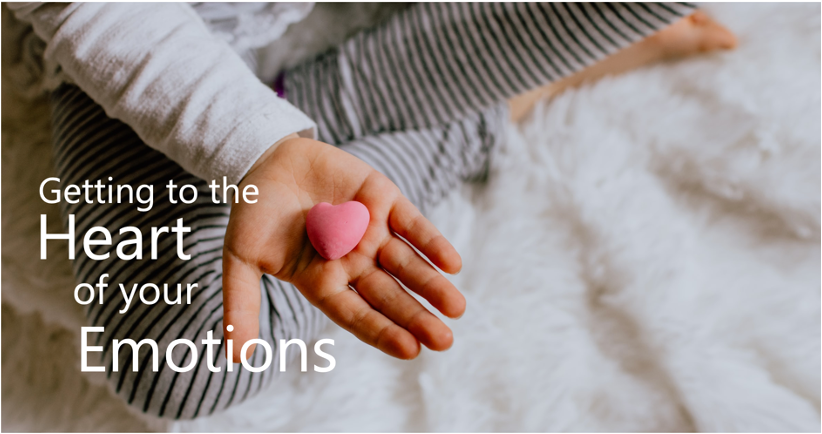
05 November 2021 | Getting to the Heart of Your Emotions | Shila Naidu
Many of us may have grown up with an idea of what emotions are acceptable for us to feel or display to others. Along the way we may have put our emotions into different categories such as ‘good’, ‘bad’ or ‘difficult’. For example, someone who was taught ‘boys don’t cry’, may think sadness is an unacceptable emotion. Another who was told ‘girls should be demure’ may be unwilling to show anger even when it may be appropriate. As you think about your own life, what are some emotions that you may have labelled ‘good’ or avoid altogether?
When we perceive a certain emotion as ‘bad’ or ‘confronting’, our natural instinct is to suppress that emotion and display a different feeling which we think is more acceptable. For instance, after doing badly at a test or an interview, you may feel disappointed and wish you did better. However, instead of showing disappointment, you get angry with the marker or the interviewer and conclude they were too strict or had a bias. In this case, perhaps dealing with the primary emotion of disappointment in oneself is just too unpleasant and it is much easier to show anger, a secondary emotion, toward the other people involved in the situation.
While a primary emotion is our initial reaction to a situation, a secondary emotion is our reaction to how we feel. Most of the time primary emotions cause us to feel vulnerable and secondary emotions protect us. I do this all the time when my husband and I argue. I appear angry that he is unable to see my perspective, but in fact I am feeling sad and lonely because the person closest to me does not seem to be on my side. In that moment of conflict, I naturally want to protect myself rather than seem vulnerable to him. If we fail to identify what we are truly feeling, we lose precious opportunities to grow personally and connect deeper with others by helping them understand us. Strangely, being vulnerable requires much courage in addition to insight.
I have also met clients who carry deep emotional scars left behind by harsh parents. Many are unable to confront their primary emotions because they feel it is wrong to be angry with one’s parents. They cope by displaying sadness as a secondary emotion which is culturally or socially more acceptable than anger. However, as human beings, we have this innate ability (and dare I say, need) to experience the full spectrum of emotions. We may potentially do more harm when we only give ourselves permission to experience what we deem as ‘acceptable’ emotions.
Here are some suggestions to help identify primary emotions and grow from the situation:
-
- As the triggering event unfolds, periodically ask yourself what you are feeling;
- Register any difference between the emotions you are feeling and the emotions you are displaying.
- Take a moment to reflect on where that is stemming from – ‘is my primary emotion going to make me too vulnerable?’, ‘have I been taught this is a bad emotion?’, ‘is this emotion too confronting because it means I have not put in enough effort?’, etc.
- Decide if there is something you can do to improve the situation, e.g. ‘be vulnerable with your spouse’, ‘tell your boss you need more training in a certain area’, etc. and take action where possible. Maybe there is no action to be taken, and you have just gained some personal insight for keeps.
If you relate to this concept of primary and secondary emotions and would like to work with someone to process your own experiences, feel free to contact us or drop us an email. We are here to help you thrive and live your most authentic life. Take care and have a rewarding day ahead!

